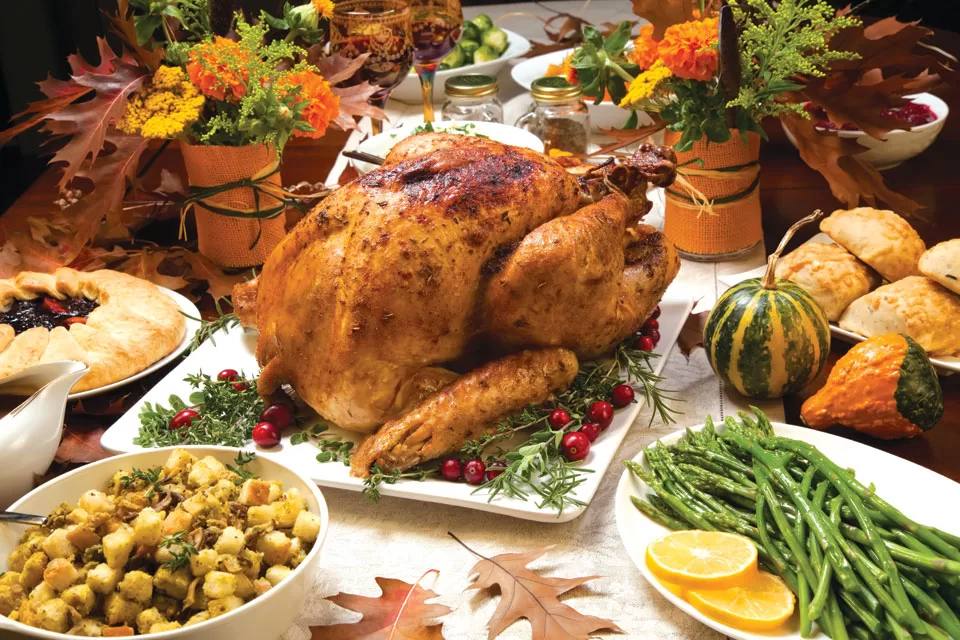
Why We Kiss Under The Mistletoe
The ancient Celtics believed mistletoe to have magical healing powers and used it as an antidote for poison, infertility, and to ward off evil spirits. The plant was also seen as a symbol of peace, and among Romans it was said that enemies who met under mistletoe would lay down their weapons and embrace.
Scandanavians associated the plant with Frigga, their goddess of love, and it is probably from this that we derive the custom of kissing under the mistletoe. Those who kissed under the mistletoe had the promise of happiness and good luck in the following year.
Saint Nicholas Is In Bari, Italy
The origin of Santa Claus begins in the 4th century with Saint Nicholas, Bishop of Myra, an area in present day Turkey. By all accounts St. Nicholas was a generous man, particularly devoted to children. After his death around 340 A.D. he was buried in Myra, but in 1087 Italian sailors purportedly stole his remains and removed them to Bari, Italy, greatly increasing St. Nicholas’ popularity throughout Europe.
St. Nicholas Basilica, The Basilica di San Nicola (Saint Nicholas), was opened to receive the relics of this saint that now lie beneath the altar in the crypt.

The Custom of Christmas Cards
The custom of sending Christmas cards was started in the UK in 1843 by Sir Henry Cole. He was very interested in the new ‘Public Post Office’ and wondered how it could be used more by ordinary people.
Sir Henry commissioned his friend John Horsley, an artist, to design the first Christmas card. They sold them for 1 shilling each. The card had three panels. The outer two panels showed people caring for the poor and in the center panel was a family having a large Christmas dinner. No one is sure how many were printed but it is estimated at one thousand. They are now very rare and cost thousands of dollars to buy.
The Creation Of Gingerbread Houses
The tradition of making decorated gingerbread houses started in Germany in the early 1800s not long after the Grimm Brothers published their collection of fairy tales. The particular tale that made those houses so popular was of course Hansel and Gretel.

Christmas Cookies
The earliest examples of Christmas cookies in the United States were brought by the Dutch in the early 17th century. Due to a wide range of cheap imported products from Germany between 1871 and 1906 following a change to importation laws, cookie cutters became available in American markets. These imported cookie cutters were of all types of holiday images and they were designed to hang on Christmas trees. Due to the availability of these utensils, recipes began to appear in cookbooks designed to use them.
Since the 1930s, children have left cookies and milk on a table for Santa Claus on Christmas Eve.

Celebrities’ Popular
HOLIDAY RECIPES
J. Lo’s
BERRY BERRY GOOD SMOOTHE
Instructions
Blend all ingredients until smooth and creamy.
Emeril Lagasse’s
HORSERADISH-CRUSTED TENDERLOIN OF BEEF WITH PORT WINE REDUCTION
Instructions
To prepare beef: Preheat the oven to 400° F.
Rub the tenderloin with the oil and Emeril’s Original Essence. Heat a sauté pan large enough to hold the tenderloin over high heat until the pan is very hot, about 2 minutes. Sear the meat until evenly browned on all sides, about 2 minutes per side. Remove from the heat. Line a shallow baking pan fitted with a wire rack with aluminum foil. Place the tenderloin on the rack. Rub the top and sides of the meat with the mustard. Combine the horseradish, black pepper, garlic, and salt in a small mixing bowl. Using your hands, press the horseradish mixture over the mustard on the top and sides of the tenderloin. Roast the tenderloin for about 30 minutes for rare (120° to 125° F on an instant meat thermometer) and about 35 minutes for medium-rare (130° to 140° F on an instant meat thermometer). Remove from the oven and rest for 5 minutes before slicing. Drizzle the beef with the wine reduction if desired.
Gordon Ramsay’s
ROAST TURKEY WITH LEMON, PARSLEY & GARLIC
Instructions
Preheat the oven to 425° F.
Put the butter into a large bowl and season with salt and pepper. Add the olive oil and mix well. Add the lemon zest and juice, crushed garlic and chopped parsley. Mix well to combine.
Remove the giblets from the turkey cavity. Season the cavity well with salt and pepper, then stuff with the onions, lemon, garlic halves and 2 bay leaves. Loosen the skin on the breast from both ends of the bird so that you will be able to stuff the flavored butter underneath it, making sure you keep the skin intact. Repeat with the skin on the legs.
Stuff half the butter mix into the opened spaces under the skin. From the outside of the skin, gently massage the butter around the breasts so that the meat is evenly covered. Insert the rest of the bay leaves under the skin of the breasts. Place the bird in a large roasting tray, breast side up. Spread the rest of the butter all over the skin. Season well with salt and pepper, then drizzle with a little olive oil. Roast the turkey in the hot oven for 10-15 minutes.
Take the tray out of the oven, baste the bird with the pan juices and lay the bacon over the breast to keep it moist. Baste again. Lower the setting to 350° F and cook for about 2½ hours basting occasionally. To test whether your turkey is cooked, insert a skewer into the thickest part of the leg and check that the juices are running clear, rather than pink. As oven temperatures and turkey shapes and sizes vary, it is crucial to check your turkey about 30 minutes before the calculated roasting time. If the juices are pink, roast for another 15 minutes and check again.
Rachael Ray’s
APPLE & ONION STUFFIN’ FOR A STUFFIN’ LOAF OR MUFFINS
Instructions
Preheat the oven to 400° F.
Preheat a large skillet over medium-high heat. Add the extra virgin olive oil to the skillet and the butter. When the butter melts, add the bay leaf, celery, onions and apples. Season with salt, pepper and poultry seasoning, and cook 5-6 minutes or until vegetables and apples begin to soften. Add the parsley and stuffing cubes to the pan and combine. Moisten the stuffing with chicken broth until all of the bread is soft, but not wet. Remove bay leaf and let cool either in the pan or in a bowl.
Brush a cookie sheet or a metal oven-safe oval tray with extra virgin olive oil. Form a loaf shape out of your stuffing and bake until set and crisp on top, about 15 to 20 minutes.
You can also make this stuffin’ into individual muffins: Brush a 12 muffin cup holder with butter (about a 1/2 stick, melted). Add the beaten egg to the cooled stuffing mixture. Using an ice cream scoop, fill and mound up the stuffing in muffin tins. Bake until set and crisp on top, 10-15 minutes. Remove stuffin’ muffins to a platter and serve hot or room temperature.
Paula Deen’s
HOLIDAY SPICE CAKE
Instructions
Quick buttercream: Beat the butter, shortening, and salt together until creamy with an electric mixer. Add half the confectioners’ sugar and beat until light and fluffy, about 5 minutes. Then gradually beat in the remaining confectioners’ sugar alternating with the vanilla and cream until it is all incorporated and the frosting is very light and fluffy. Cake: Preheat oven to 350° F. Butter and flour three (8-inch) round cake pans. In a small mixing bowl whisk together dry ingredients: cake flour, baking powder, baking soda, ground nutmeg, ground cinnamon, ground ginger, and ground cloves. Cream the butter, sugar, and salt until light and fluffy with an electric mixer. Beat in the eggs, 1 at a time, beating well after each addition. Beat in the dry ingredients and the buttermilk alternately, beginning and ending with the dry ingredients. When the batter is well mixed and smooth, divide it among the three prepared cake pans and bake about 25 minutes, or until a toothpick inserted into the center of the cakes comes out clean. Let cool in the pan for 10 minutes then turn out to cool completely. If the cake layers have domed a little during the baking process, slice off the tops with a long, serrated knife so they are flat and even. Place the first layer, cut-side down, on a cake pedestal or serving plate. Spoon about 3/4 cup of buttercream onto the center of the cake. Spread it almost to the very edges with an offset spatula.
Repeat with the remaining two layers. Garnish the top of the cake with finely chopped nuts and cocoa powder.
